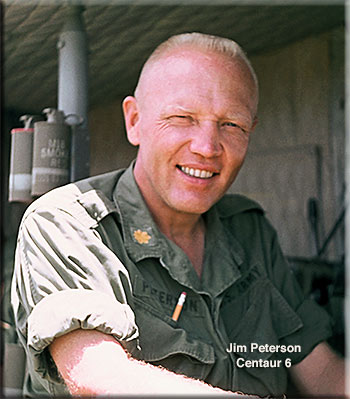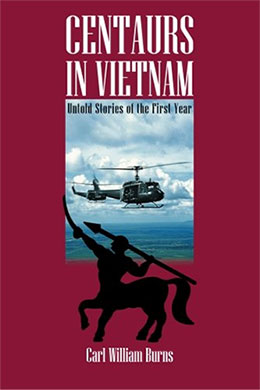

D Troop Redefined - 1966

 I think we should redefine D Troop’s part in Cavalry Squadron, 25th Division Operations or even in Southeast Asia. As much as we performed and accomplished as a troop, the combat environment in Vietnam did not permit or demand that the squadron or the troop be employed as originally envisioned by the Army Combat Development Command (CDC).
I think we should redefine D Troop’s part in Cavalry Squadron, 25th Division Operations or even in Southeast Asia. As much as we performed and accomplished as a troop, the combat environment in Vietnam did not permit or demand that the squadron or the troop be employed as originally envisioned by the Army Combat Development Command (CDC).
I was assigned to the Armor Agency at Fort Knox, Kentucky, in the period 1963-1965 before being sent to Fort Benning, Georgia, for Huey transition.
Prior to the build-up of American troops in Vietnam, beginning about 1963, the Air Cavalry was nothing more than a glimmer in the eye of the recon/armor as well as infantry and artillery people. For example, during that period the Army knew that heavier weapons needed to be carried on the helicopters. In 1964 Bell Corporation was under contract to test with instrumentation the live firing of .50 caliber machine guns at Fort Huachuca, Arizona (probably an A model Huey, not configured for medivac). Other programs were testing the Tube Launched, Optically Tracked, and Wire Guided (TOW) anti- tank missle, along with a competitor missile on the Huey.
Several gunship development programs were under way. I sat on a source selection evaluation board for one of them.
The CDC and Force Command looked toward establishing a test unit as equipment became feasible; Fort Knox, Kentucky, was under consideration for this. The Armor School and Armor CDC Agency were jointly looking at fighting manuals (read: Field Manuals)for air cavalry. All this, however, was in the European environment when Russia was the enemy.
Around 1965 a Presidential decision was made to build up the U.S. Army in Vietnam to maybe half a million men.The army turned its direction toward mounting weapons at hand on the Huey and even tried the OH-13/OH-23G. That is what we had in Viet Nam, the weapons at hand.
In the larger view, the Air Cavalry was to perform essentially the same missions as the regular ground cavalry: reconnaissance, security and light combat. Read: Move, Shoot and Communicate, but from the air. Aerial scouts, airborne infantry, direct fire (no indirect fire—mortar squad), more or less mirrored the ground troop basic organization. And so the manuals read.
As an aside, this is why I was surprised to learn of D Troop being assigned to the 25th Infantry Division. The only thing I could figure out was that III Corps area was really the only countryside (terrain/environment) that would demand or allow use of the capabilities of an Air Cavalry unit as envisioned.
As it turned out, none of the mechanized units were really employed as envisioned either. The guerilla warfare nature of jungle fighting with a different kind of enemy caused us to adjust our combat strategies.
The missions assigned to the 3⁄4 Cavalry Squadron were not what could be expected. Employment of ground troops, as I recall, as independent units took place only twice. I remember them because of major events.
The first was A Troop up in the area of Boi Loi Woods, hardly maneuver country. We had gun teams standing by if not on station. A Troop was there several days.The major event happened one afternoon as an A trooper went down a tunnel after a VC. After a while the troops at the tunnel opening heard a shot. Another trooper eventually went down after the first trooper, and found his body with his watch and boots removed.
I can remember trying to get our Operations Sergeant to get Centaur 5 on the radio to me as I flew over the area. I requested that Centaur 5 go to the squadron executive and suggest that a trash can loaded with beer and ice be sent out for A Troop to have with the evening meal. We could haul it out there.
The second occurrence was one where the troops were operating on terrain north and west of Cu Chi. I had landed near the command track and tried to coax the S-3 out to see the countryside. We were overtaken by events because one of the troop’s armored personnel carriers (APC) had caught fire and proceeded to burn until the ammunition and fuel exploded. No injuries. It was something to see the top of the APC blow 50 feet into the air!
Now, as Troop Commander, I was not about to send the OH-23s out to do a scout’s job as visualized by the forthcoming field manuals. They were simply not the strong, survivable, agile machines that the replacement OH-56 was designed to be. Assigned missions? For example: hedgerow or tree line reconnaissance. A team of scouts in the OH-56 would have been, and eventually were, excellent for that mission. When to use it? On one occasion a brigade had airlifted a unit into a relatively open rice paddy area that fell under observation by a wide swath of trees or a hedgerow. As the infantry advanced toward the trees, an in-transit enemy unit, unseen in the hedgerow, opened fire and pinned down the infantry. Because of close proximity the markings were not put out for an air strike. Several years later that wartime operation would have included aerial scout reconnaissance of the hedgerow prior to the air lift landing, and likely drawn and returned fire which in turn would have brought gunships and/or an air strike into play .
In summary, D Troop performed the missions required of it and performed other missions in support of the division. In the final analysis the division commander referred to D Troop as his “hip pocket reserve.” That did not come from field manuals.